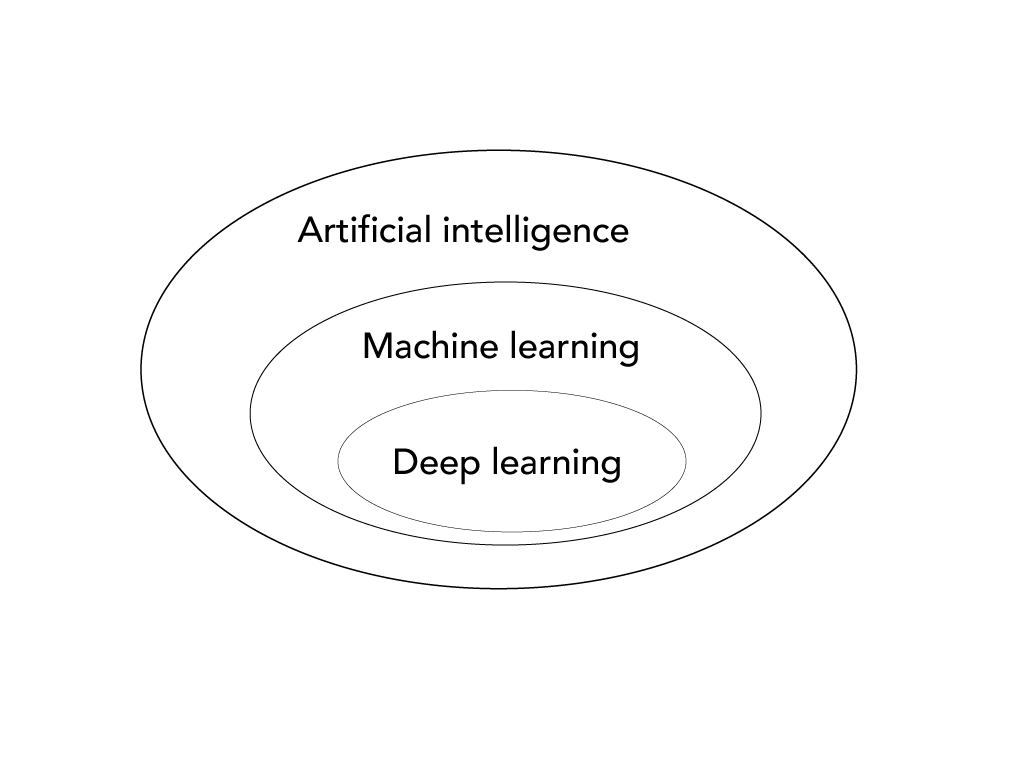Artificial intelligence is the broader concept of machines being able to perform tasks that would require human intelligence. It’s just a computer program doing something intelligent. A system that uses if-then-else rules in order to make a decision, is also artificial intelligence. If you build a loan expert system consisting of thousands of rules like “if spends more on coffee than on groceries, less chance to get a loan” or “if hides his/her online shopping from his/her significant other, less chance for the loan” to decide whether you get a loan, that system belongs to the artificial intelligence domain. These programs (although with slightly better rules) have already been around for 50+ years. Artificial intelligence is not something new.
Machine learning is the subset of AI that involves the use of algorithms and statistics to enable systems to learn from and make predictions by themselves. Simply put, it is a way for computers to learn how to do things by themselves, without being specifically programmed to do so. Without a human expert specifying all the domain knowledge like “if borrows money from parents to pay for Netflix subscription, less chance for a loan”. The system figures out what to do based on examples. Again, these – and even popular current approaches like neural networks – have already been around for 50+ years although largely in academic settings.
Deep learning is the subset of machine learning that is usually associated with the use of (deep) artificial neural networks – the most popular approach to machine learning. We’ll explain artificial neural networks in the next section but for now, think of them as a computer system that tries to work like our brain. Just like our brains have lots of little cells called neurons that work together to help us think and learn, an artificial neural network has lots of nodes that work together to solve problems. The term “deep” refers to the depth of these networks – the reason why they appear more and more in the media and real use cases is that to make them work well they need a lot of nodes and layers (hence, the term “deep”), which in turn requires a lot of data and computational power. What ended the previous AI winter (=a period without major breakthroughs in AI) is mostly the fact that we have more data and computational power now. Some recent important algorithmic advances enhanced a new spring in the AI seasons, though with the data and computational power of 20 years ago, (almost) no impressive machine learning system would be used in a real product today. These neural networks can figure out things like “if a person has a pet rock, wears a tutu to work, speaks only in rhymes, is allergic to money, has a fear of banks, but has initial influencer success, get more chance for a loan” but then even a thousand or million-fold more complex and without the possibility of the deep net explaining itself in a way that’s interpretable by us humans.

Xavier, next time I’ll leave it up to you to make the text more interesting to read.
The link between AI, ML and DL is represented like this in a Venn diagram:
